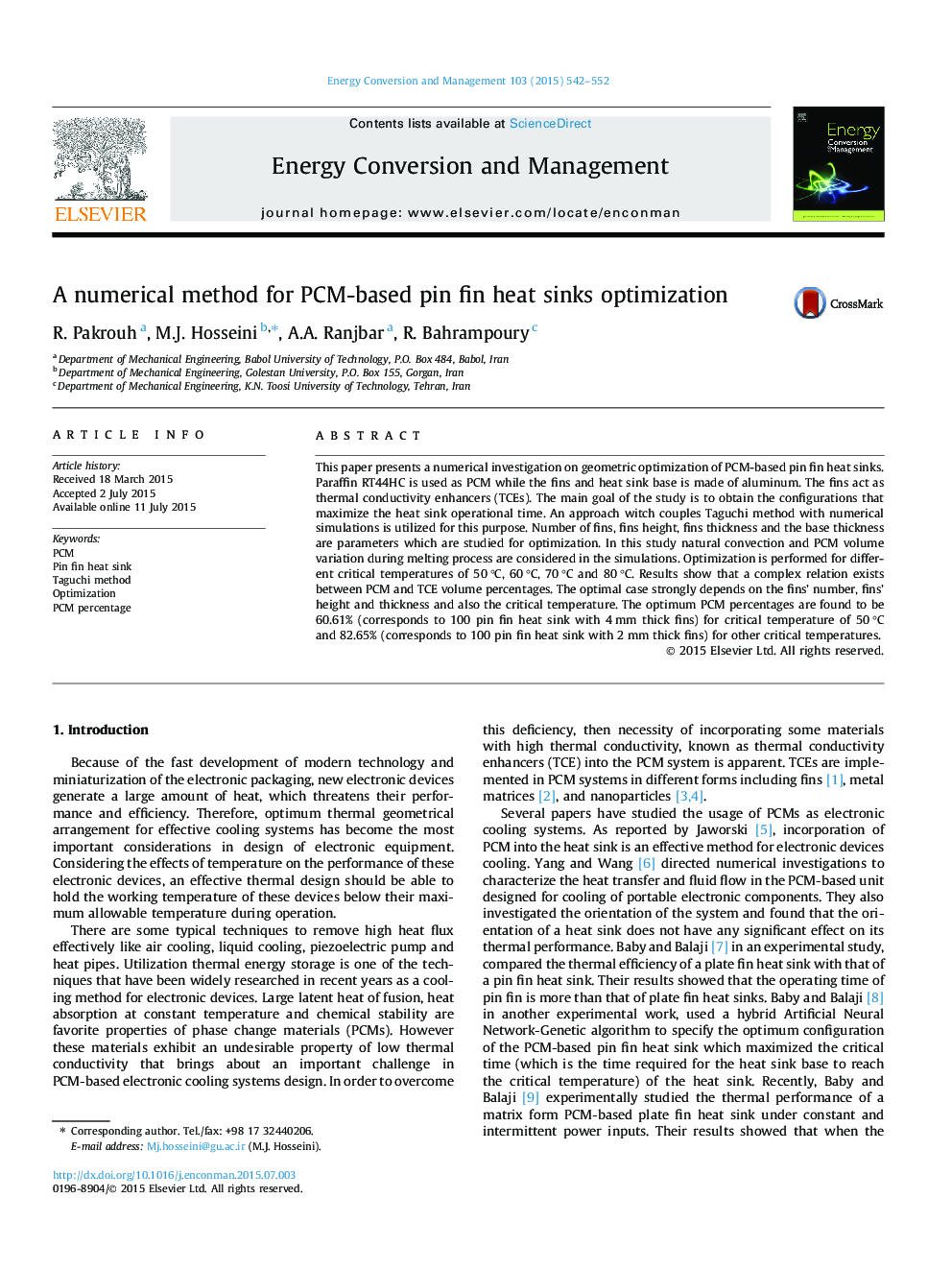| Article ID | Journal | Published Year | Pages | File Type |
|---|---|---|---|---|
| 771673 | Energy Conversion and Management | 2015 | 11 Pages |
•Optimization of PCM-based heat sink by using the Taguchi method.•Derivation of optimal PCM percentage to reach the maximum critical time.•Optimization is performed for four different critical temperatures.•Effective design factors are fins’ height and fins’ number.•The optimum configuration depends on geometric properties and the critical temperature.
This paper presents a numerical investigation on geometric optimization of PCM-based pin fin heat sinks. Paraffin RT44HC is used as PCM while the fins and heat sink base is made of aluminum. The fins act as thermal conductivity enhancers (TCEs). The main goal of the study is to obtain the configurations that maximize the heat sink operational time. An approach witch couples Taguchi method with numerical simulations is utilized for this purpose. Number of fins, fins height, fins thickness and the base thickness are parameters which are studied for optimization. In this study natural convection and PCM volume variation during melting process are considered in the simulations. Optimization is performed for different critical temperatures of 50 °C, 60 °C, 70 °C and 80 °C. Results show that a complex relation exists between PCM and TCE volume percentages. The optimal case strongly depends on the fins’ number, fins’ height and thickness and also the critical temperature. The optimum PCM percentages are found to be 60.61% (corresponds to 100 pin fin heat sink with 4 mm thick fins) for critical temperature of 50 °C and 82.65% (corresponds to 100 pin fin heat sink with 2 mm thick fins) for other critical temperatures.
